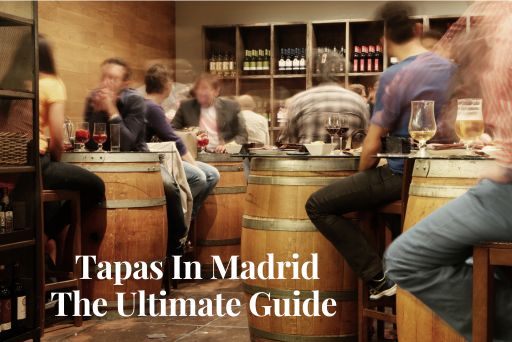
Tapas In Madrid – The Ultimate Guide
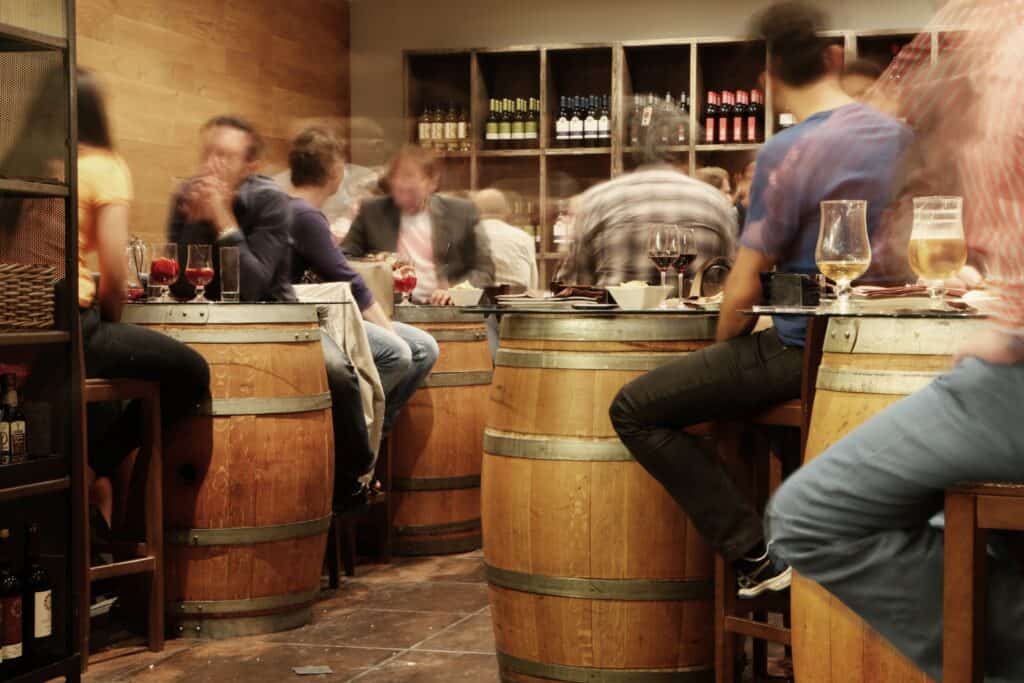
It is impossible to come to Madrid and not feel captivated by its rich gastronomy while exploring the city’ sights. Wander through any area in the city centre and you’ll find yourself surrounded by streets filled with bustling bars that are constantly serving up great tapas to locals and tourists.
To help you prepare for your next visit to Madrid, we have prepared our ultimate guide to eating tapas. In this guide, we explore all things associated with tapas, from its history, the best tapas to order and the best tapas bars in Madrid. So let’s get started.

What Is Tapas?
Imagine being in a bustling bar in Spain, surrounded by locals, all chatting over small plates of delicious food as they sip on their drinks. This is the essence of tapas – a vibrant culinary tradition that has been the cornerstone of Spanish culture for centuries.
The concept of tapas is designed to encourage socializing and sharing, as each dish is meant to be small enough to be consumed in a few bites. The dishes can range from simple items like olives, bread and cheese, to more elaborate dishes made with seafood, meat and vegetables.
So, in Spanish culture, tapas isn’t just the food, it is about the atmosphere, the energy, and the sense of community that comes with sharing food with others.
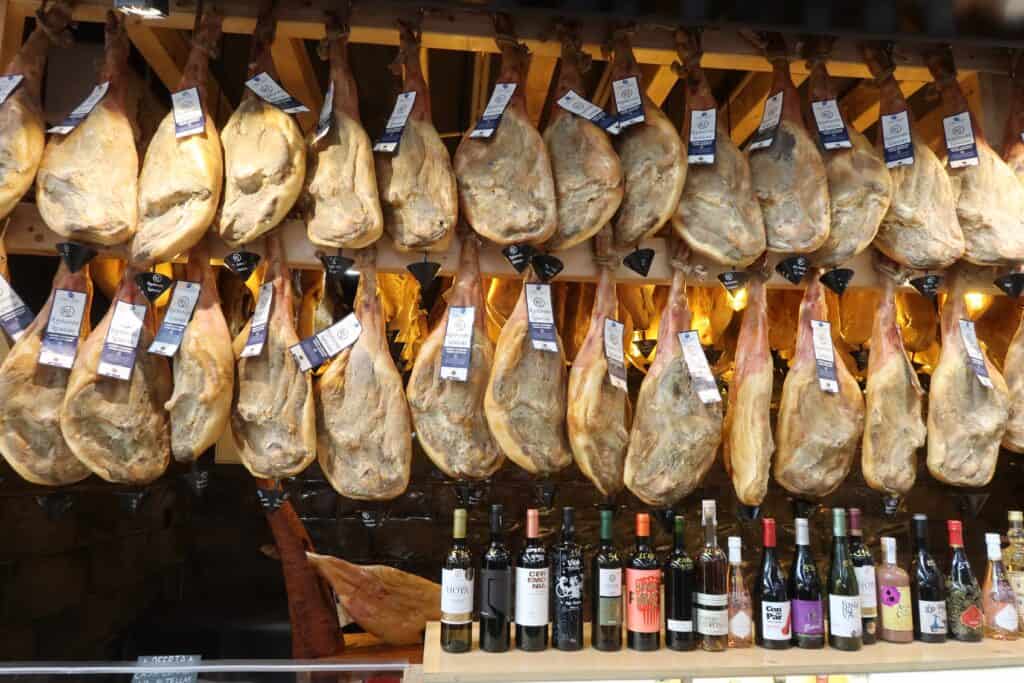
The History Of Tapas
There are several variations of the history of tapas. One popular theory is that tapas originated in medieval Spain, where it was customary to cover drinks with small plates or slices of bread to keep out insects. The bread was often topped with meat, cheese or other simple toppings. The word tapa comes from the verb taper – which means to cover and the Spanish work for lid is tapa.
Another theory suggests that tapas were created by Spanish farmers and labourers as a way to supplement their meals throughout the day while working. They would carry small portions of food with them that could be easily eaten on the go.
Yet another theory posits that tapas originated as a way to protect oneself from the side effects of drinking strong Spanish wine on an empty stomach. Small dishes like meat, cheese, and olives would be served alongside the wine, helping to absorb the alcohol.
Regardless of which theory is true, tapas has become an integral part of Spanish cuisine and culture for centuries.

Where Can You Eat Tapas?
The places to eat tapas are generally in bars or taverns instead of cafes and restaurants, as it is common to eat tapas alongside drinks such as beer and wine.
In Madrid, you will find tapas bars crowded together on certain streets. One reason for this is because of the tradition of “tapear”. Tapear is the practice of moving from bar to bar with friends, trying different tapas at each stop. When bars are located near each other, it makes it easier for people to try out multiple bars in one outing. This creates a lively atmosphere in the area as people move from one establishment to the next.
In addition, clustered bars help to create a sense of competition and community, which ultimately drives creativity in the culinary scene. Bars will aim to create unique and delicious tapas in order to stand out from the competition in the area. This leads to a diverse selection of tapas on offer, which is a win for both locals and tourists.
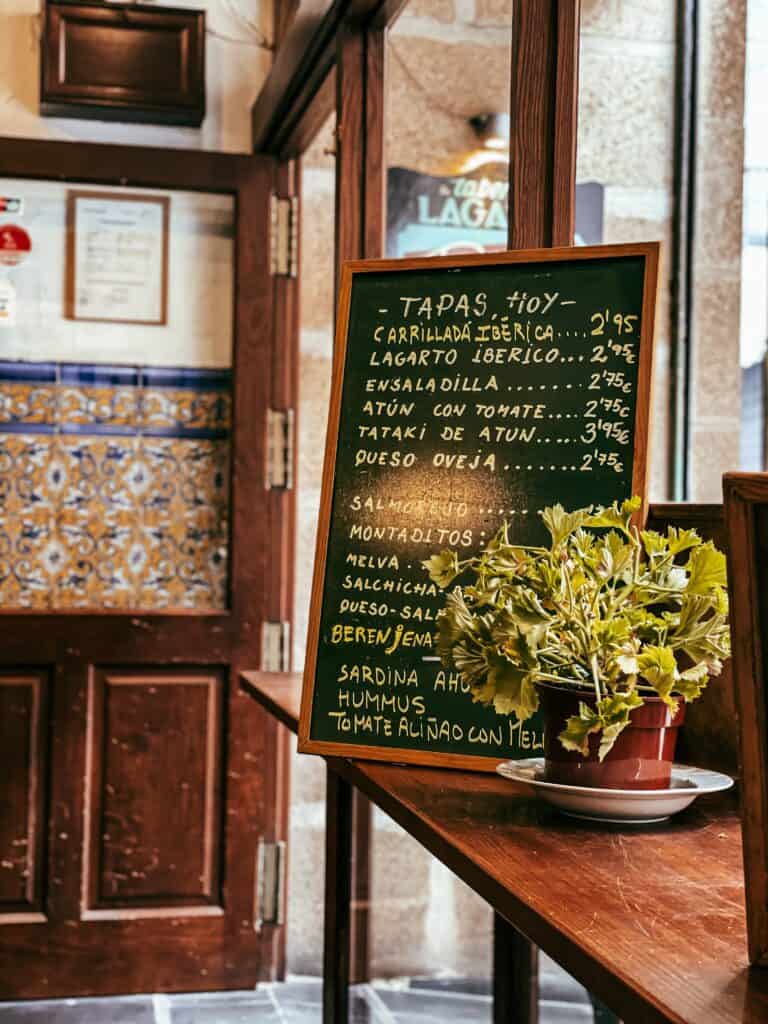
How To Order Tapas?
Ordering tapas is a social activity, and it is common to order several plates to share among your group. Here are a few tips to help you navigate the ordering process:
- Order your drinks first to see if any complimentary tapas is served and then order more depending on how much you want eat. If tapas is complimentary, as you order more drinks, more complimentary tapas will be served.
- Look at the board or menu which will list the different options available.
- Ask the bartender or waiter for their recommendations.
- Check out the display of freshly made tapas at the bar.
- Be adventurous and try the local dishes.
- If you’re not sure what to order, ask for a mixed plate to get a variety of different options on one plate.
Tapas Vs Raciones
Tapas is a small portion and racion (plural raciones) is normally a much bigger portion so once racion is enough for sharing with several people. As raciones are bigger portions they are typically more indulgent and hearty dishes, such as stews and grilled/sautéed meats or seafood.
What Time Of Day Is Best To Enjoy Tapas?
Tapas can be enjoyed at any time of day but are especially popular during the late afternoon (1:30-3pm) and evenings (from 8:30pm). When you meet a Spaniard for tapas it means you meet them for a drink and a bite to eat and often move on to a different bars during the course of the evening.
Late afternoon and after 8pm are great times to eat tapas for the best atmosphere and freshest food.

Popular Tapas Dishes in Madrid
Some of the most popular tapas dishes you should try when in Madrid:
Albondigas – Meatballs made from usually pork or beef.
Boquerones – Anchovies soaked in vinegar. May not be everybody’s favourite dish, but if you like fish, you’ll want to try this tapa.
Chorizo al Vino – Chorizo cooked in wine.
Croquetas – Fried, breaded balls filled with béchamel sauce and a variety of fillings, such as cheese and ham.
Gambas al Ajillo – Shrimp cooked in olive oil, garlic, and red pepper flakes.
Huevos Rotos (broken eggs) – Fried potatoes, topped with eggs, and sometimes ham.
Jamon – the generic word for ham. Jamon on menus usually refers to various dry aged hams such as Serrano, Iberico and Bellota.
Patatas Bravas – Deep fried potatoes usually served with a tomato-based sauce that has a slight kick to it.
Pimientos de Padrón – Small green peppers served sautéed with salt and olive oil.
Pulpo Gallego – Octopus, cooked in paprika and olive oil and typically served with potatoes and onions.
Salmorejo – A traditional cold tomato soup.
Tortilla de Patatas – An omelet made with potatoes and onions.

What To Drink With Tapas?
The most popular served in tapas bars are:
Vermouth (Vermut) – This aromatic and slightly bitter aperitif is typically served on tap and is a favorite among locals. It’s perfect for pairing with tapas dishes like olives and anchovies.
Wine – Spain is known for its excellent wines, and tapas bars in Madrid offer a wide selection of both red and white wines.
Fino – A dry sherry made from the Palomino grape in Jerez, this is a traditional drink to have with tapas.
Sangria – This fruity wine-based drink is made with red wine, fruit, and a splash of brandy.
Beer – Spanish beers, such as Mahou and Estrella, are popular options in the tapas bars. Ask for a cana – small glass of cold fresh beer from the tap.
Cerveza con Limón – A refreshing drink made by combining beer with lemon soda. It’s perfect for those looking for a light and refreshing drink to pair with tapas.
Tinto de Verano – This drink is similar to sangria, made by mixing red wine with lemon soda or sparkling water.

Best Places To Eat Tapas In Madrid
Madrid has some of the best tapas bars in the Spain. In the evening these tapas bars are filled with families and friends embracing this wonderful way of eating and being together. These are our top recommendations.
Almendro 13
This rustic tavern in the latin neighbourhood is very popular with the locals so getting a table can be difficult; especially at the weekends. However, be patient, get a drink at the bar, soak up the local atmosphere and before long you will be enjoying wonderful traditional dishes such as huevos rotos (broken eggs) and you will see why Alemendro 13 is such a popular place to hangout.
Bodega La Ardosa
Opened in 1892, Bodega La Ardosa is a popular tapas bar decorated with historic memorabilia and located in the trendy Malasaña neighbourhood. This bar was the first to serve foreign beers and along with a selection of fine wines and a great traditional menu makes this place such a city classic. Some say this is the best place for tapas in town and the tortilla de patatas (potato omelette) and salmorejo (cold tomato based soup) is not to be missed.
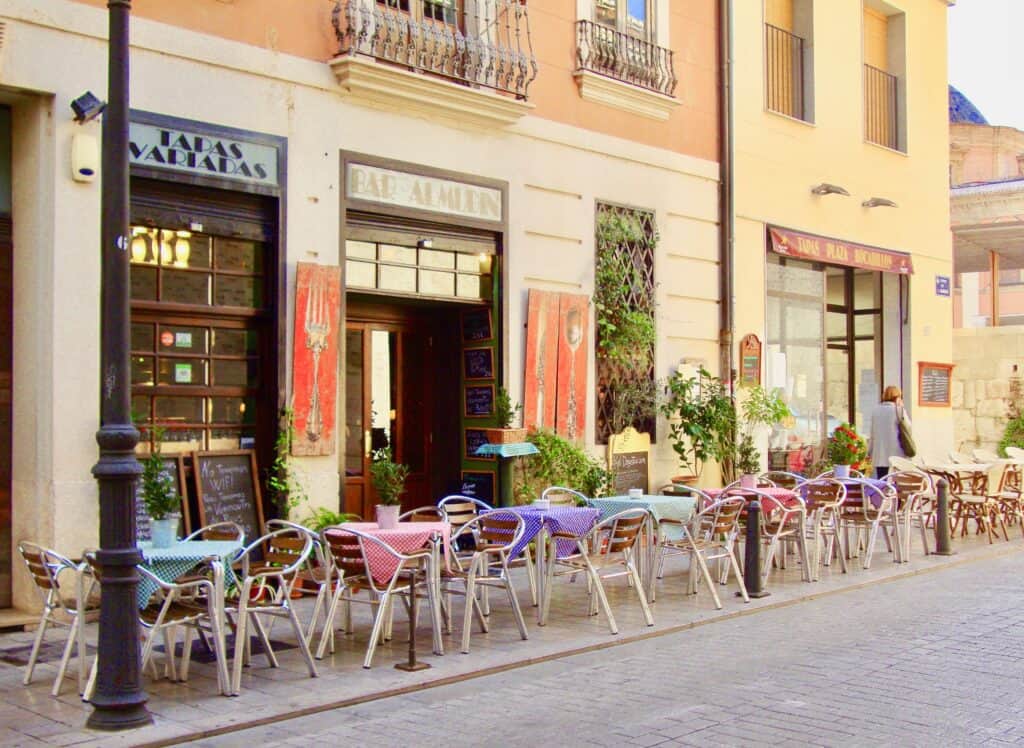
Casa Alberto
Nearly 200 years old, Casa Alberto with its bright red façade is another centrally located classic where hearty tapas is served in ornate surroundings. This tavern was a popular meeting place for writers, actors and bullfighters and the building is on the site of where one of the greatest Spanish writers Cervantes lived and wrote part of his masterpiece Don Quixote. Enjoy the excellent tapas at the bar or a fine sit down meal from a traditional menu; and along with traditional vermouth and draft beers; this is a quality tapas bar.

La Casa Del Abuelo
Opened in 1906 La Casa Del Abuelo (Grandfather’s house) is found in the heart of Madrid in Calle de la Victoria and is most famous for its prawn dishes along with its own brand of sweet red wine. Since opening, four generations of the same family have ran and conserved this establishment and a visit has become a must for anyone visiting the capital. The most popular dish is shrimps cooked in garlic and when eaten with plenty of bread is just delicious.

Casa Labra
Located near the Puerto de Sol, Casa Labra has remained almost unchanged since 1860 and is one of the most traditional taverns in Madrid. The Spanish Socialist party was established here in 1879 and along with its longstanding popularity with the locals this place is considered part of the city’s history. The house specialities are the bacalao (fried cod) and the croquettes and both go great with the local beer (cana) or with the wines served from barrels. This place is a must visit.
Casa Lucio
Casa Lucio is practically an institution and many famous patrons have eaten here including the King of Spain. Located in the latin neighbourhood and serving great tapas including huevos estrellados (eggs and potatoes dish), cocido (traditional stew) and seafood. For many if you haven’t eaten at Casa Lucio then you haven’t been to Madrid.
El Anciano Rey de los Vinos
Founder in 1909, El Anciano Rey de los Vinos is located opposite the Royal Palace and Almudena Cathedral. This is a great place to order the traditional aperitif vermouth which is served here from the tap and comes with some small complimentary tapas. There is a traditional menu along with a great selection of tapas displayed at the bar. An outside terrance is also available so that you can enjoy views of both the cathedral and palace.
El Corte Ingles Callo – Gourmet Experience
We had to include this department store in our list as it has a great gourmet food court and a wonderful adjoining terrace with great views of the city. Situated on Gran Via, one of the city’s main thoroughfares, simply get some great tapas from the many food stalls and take it out to the terrace. Furthermore, you can shop for souvenirs from the high end food products that are also on sale.
La Dolores
This tavern founded in 1908 has a beautifully white and blue tiled façade located in the writers district, right across from the Congress building and serves some of the best tapas in the city. Here the speciality are the fish canapés and they go great with the well poured beers.
Malacatín
A charming classic tavern adorned with bullfighting memorabilia, Malacatin is another popular tapas spot. Run by the fourth generation of the founding family this bar has a traditional atmosphere where local tapas dishes are served and the cocido madrileño (stew based dish) is the house speciality.

Mercado de San Miguel
Mercado de San Miguel 20th century iron structure is filled with outstanding food stalls and is located next to the Plaza Mayor right in the heart of the city’s historic centre. This gastronomic temple is one of Madrid’s oldest markets and its many food stalls showcase the most wonderful tapas and gourmet treats. Make sure you visit this incredible food venue.
Mercado de San Anton
Located in the cool Chueca district, Mercado se San Anton is modern multi level market that sells top quality fresh produce on the ground floor and on the upper floors offers a wider range of eating and drinking options; including an open terrace. A great place to go and see where the locals shop and eat.
Vi Cool
For a more modern twist to traditional tapas dishes, Vi Cool serves delicious tapas by renowned chef Arorla but with a more relaxed offering. Located in the writers district, this bar takes its inspiration from traditional tapas dishes interpreting and serving it with modern twists.
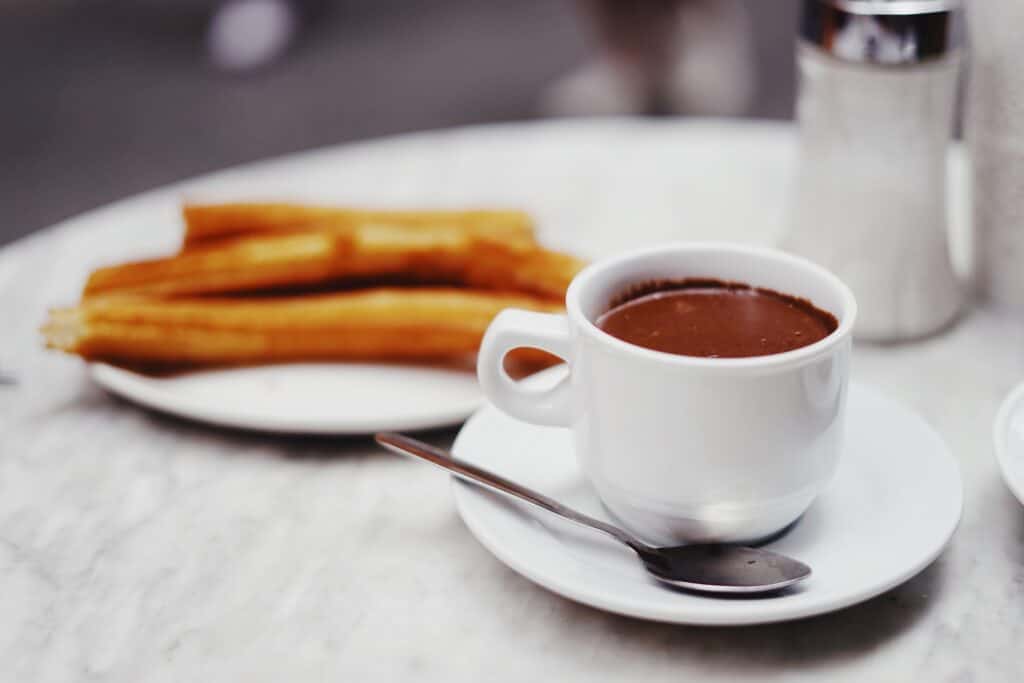
Chocolateria San Gines
Finally, for something sweet. We know this is not tapas, but a great way to finish off the evening is eating churros.
Tucked away in an alley close to San Ginés church and west of Puerta de Sol is the famous Chocolatería San Ginés. Founded in 1894 this famous cafe is known for serving hot chocolate and churros nearly 24 four hours a day seven days a week. So make sure you visit this cafe when in Madrid for your sweet fix.
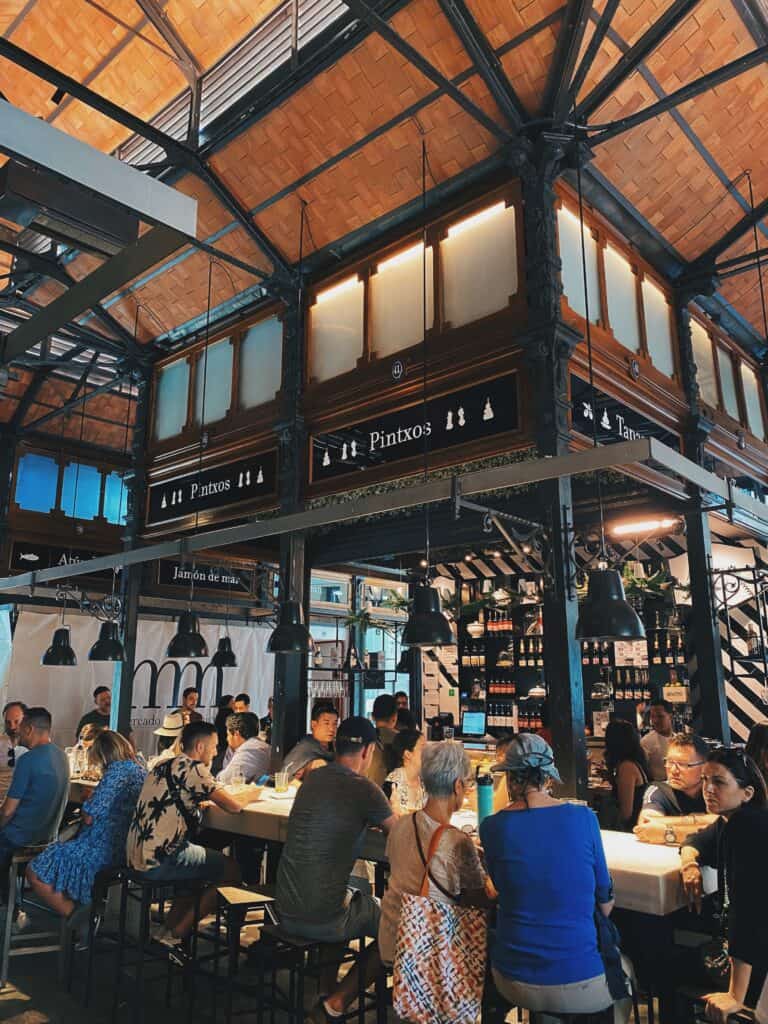
So to wrap on our guide to Tapas In Madrid…
With its historic roots and vibrant culinary presence, it’s no wonder why Madrid is the perfect visiting spot for any traveler wanting to experience the culture of eating tapas. We hope you feel more inspired on how to fully enjoy the deliciousness of Tapas with our ultimate guide. So whether this is your first or fifth time in Madrid, we wish you an incredible meal journey as you embark on discovering the best tapas experiences across the capital city.

